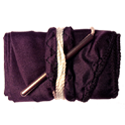Helping Patients Through Music — video available with this link.
Beverly Casson settled back in a chair and closed her eyes. A young musician named Andrew Friedrichs, playing piano maybe 15 feet away, drifted into a gentle, jazzy version of “Silent Night.”
For a moment, Beverly could forget why she was there.
“This can be uplifting, very soothing,” she said. “I love music.”
It was a January morning, during the worst of this month’s bitter cold. While a heavy snow covered the parking lot, the waiting room at Hematology Oncology Associates in East Syracuse was crowded with cancer patients awaiting chemotherapy.
Among them was Beverly, of Baldwinsville. She sat with her husband Jim: “My rock,” she called him. They have three children and eight grandchildren, and Beverly was thinking of how one of her little grandsons, over the yuletide, turned toward her after she told him she loved him.
He replied, almost in a matter of fact way: “Grandma, I love you every day.”
Every day. Those words help keep her going.
Beverly is a survivor of breast cancer, then cancer of the thyroid, and now she is battling lymphoma. She was in a good mood on this particular morning, but she shared no illusions about the treatment — “I wouldn’t be human if I didn’t have my bad days” — and she said the waiting room, in itself, is a kind of crucible.
She’s 73. She can balance her cancer against the joy, the family accomplishments, of many years. What’s hardest, she said, is when she sees young people coming in for chemotherapy. She grieves for what they are facing, all too early.
In those moments, she is grateful for the music.
“It’s a little upbeat,” she said, “in a place that can be tough.”
Andrew, a graduate student, sometimes plays with Symphoria, a nonprofit organization of about 50 musicians from the old Syracuse Symphony Orchestra. Trombone is really Andrew’s primary instrument, but he enjoys the chance to sit with the piano. Patients, moved by a particular song, occasionally slide in next to him, on the bench, to offer a memory or two as he plays.

Right, Symphoria’s Mary Sugar plays the piano for patients receiving dialysis treatment at Northeast Medical Center. In the background, at left, is Melody Hutchinson, a nurse, talking with Carole Verne, a patient from Chittenango. “I think it’s wonderful,” Verne said about the music. “It brings back a lot of memories.”Michelle Gabel | mgabel@syracuse.com
He was part of an initiative known as Healing Harmonies, established by Symphoria with the support of the Alive! Foundation. Musicians, who are paid a small stipend for their time, also perform in the St. Joseph’s Dialysis facility at Northeast Medical Center, in Fayetteville, and there are plans to expand to other medical venues.
The program was founded by Victoria Krukowski, a member of Symphoria. Two years ago today, she lost her mother,Marian Bullock, to complications related to Alzheimer’s disease. Marian loved music. As the Alzheimer’s worsened, Victoria often played clarinet for her mom.
“It helped her remember things she didn’t remember,” Victoria said. “I really believe it helped her to be more coherent.”
When Marian died, Victoria wanted to honor her mother in a way that would have lasting significance. She remembered how a friend with the Pittsburgh Symphony Orchestra once told her about the healing ripple of music on those struggling with illness.
In that way, “Healing Harmonies” was born. It became a regular feature at the dialysis center after Victoria met Dottie Clark, 80, a retired music teacher who is there three times a week, for four hours of dialysis — a treatment that replicates the work of healthy kidneys.
Dottie speaks of her fellow patients as a family, and she told Victoria that her friends would embrace the presence of music. Dialysis is a hard and draining process. One of Dottie’s arms, until she’s finished, is always attached to a machine.
“When I clap,” she said, “I clap with one hand.”
Mary Sugar, also of Symphoria, set up nearby on a recent morning to play keyboards. Mary spent years in New York City. She has performed with many renowned musicians. She was in the orchestra for several Broadway productions. She took part in concerts and shows at Kennedy Center.
None of it, she said, means as much to her as the dialysis center, where she puts up a little sign that says she takes requests.
Mary played Always as a gesture to both Dottie and Carole Verne, a Chittenango resident whose kidneys “started to go” after heart surgery in the 1990s. Carole, 75, is also dealing with multiple myleoma. Dialysis, she said, can wear her out, and there are days when she would rather not face it.
Then she thinks about her children and grandchildren, “wonderful kids who mean so much to me,” she said.
She shows up. The music is a respite, an escape.
For the indomitable Connie Tily, 80, of Jamesville, the songs are another way of gaining strength. “I don’t like to quit,” she said. She laughs about how she “married the milkman,” referring to John Tily, a guy raised on a dairy farm and her husband of 62 years.
Like Carole, Connie said the music helps her remember “all the old times.”
And the old times created all the good reasons to be here, now.
Don Edwards, too, was thankful for each melody. He worked for decades in local television and radio, before teaching at the S.I. Newhouse School of Public Communications. He and his wife Nancy will celebrate their 60th anniversary this year — which Don described as all the motivation he needs for enduring any discomfort from his treatment.
He’ll typically read throughout dialysis, but Mary Sugar’s keyboards add a new element.
“Can you imagine the difference it makes in this environment?” asked Don, 82, looking at a roomful of weary, stoic patients.
Mary played for more than an hour, then began to pack her gear. Dottie Clark, at about the same time, was unstrapped from the machine. Her husband Bob, she said, would soon arrive to pick her up. Dialysis, for Dottie, has become an old routine, and Bob can look at her face and tell exactly how it went.
“He knows as soon as he sees me,” Dottie said, “if I’ve had my music.”
Sean Kirst is a columnist with The Post-Standard. Email him atskirst@syracuse.com, write to him in care of The Post-Standard, 220 S. Warren St., Syracuse 13202, visit his blog at syracuse.com/kirst or send him a message on Facebook or Twitter.




 Right, Symphoria’s Mary Sugar plays the piano for patients receiving dialysis treatment at Northeast Medical Center. In the background, at left, is Melody Hutchinson, a nurse, talking with Carole Verne, a patient from Chittenango. “I think it’s wonderful,” Verne said about the music. “It brings back a lot of memories.”Michelle Gabel | mgabel@syracuse.com
Right, Symphoria’s Mary Sugar plays the piano for patients receiving dialysis treatment at Northeast Medical Center. In the background, at left, is Melody Hutchinson, a nurse, talking with Carole Verne, a patient from Chittenango. “I think it’s wonderful,” Verne said about the music. “It brings back a lot of memories.”Michelle Gabel | mgabel@syracuse.com





 Dr. Christine Carter is interested in how musicians can be more effective on stage and in the practice room. She has conducted research at a number of brain imaging and music psychology labs and is currently a visiting scholar at Western University’s Brain and Mind Institute.
Dr. Christine Carter is interested in how musicians can be more effective on stage and in the practice room. She has conducted research at a number of brain imaging and music psychology labs and is currently a visiting scholar at Western University’s Brain and Mind Institute.




